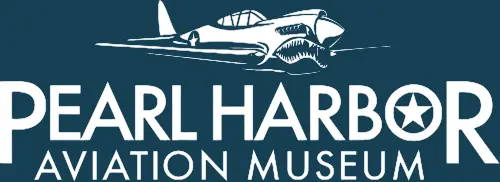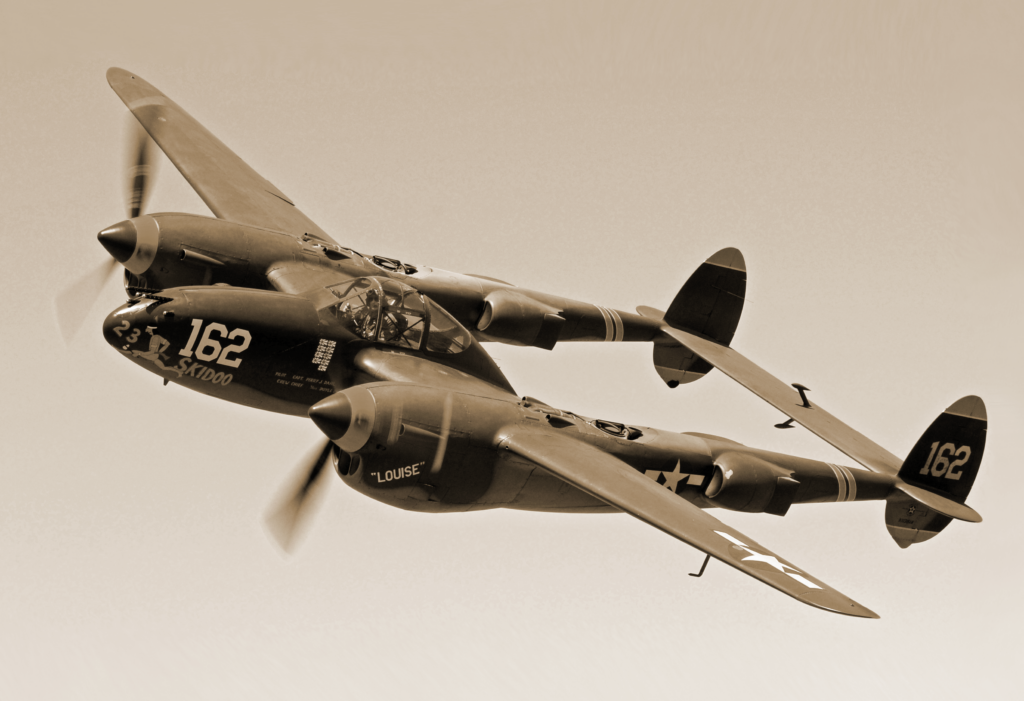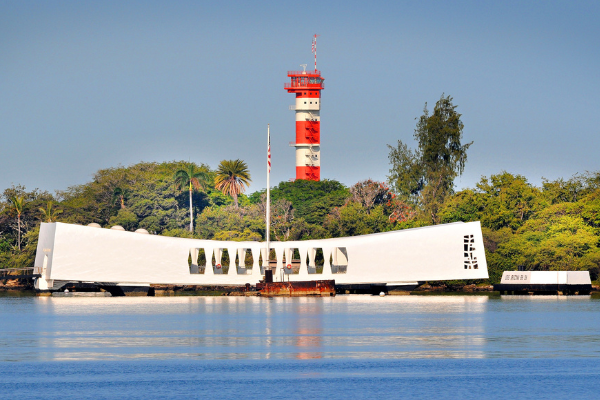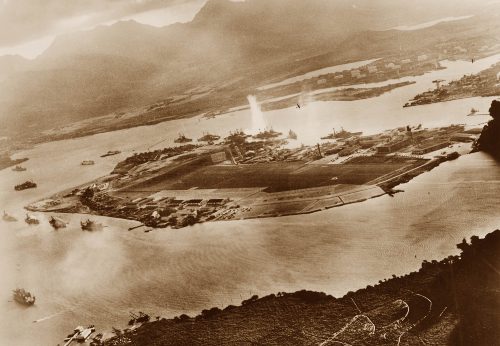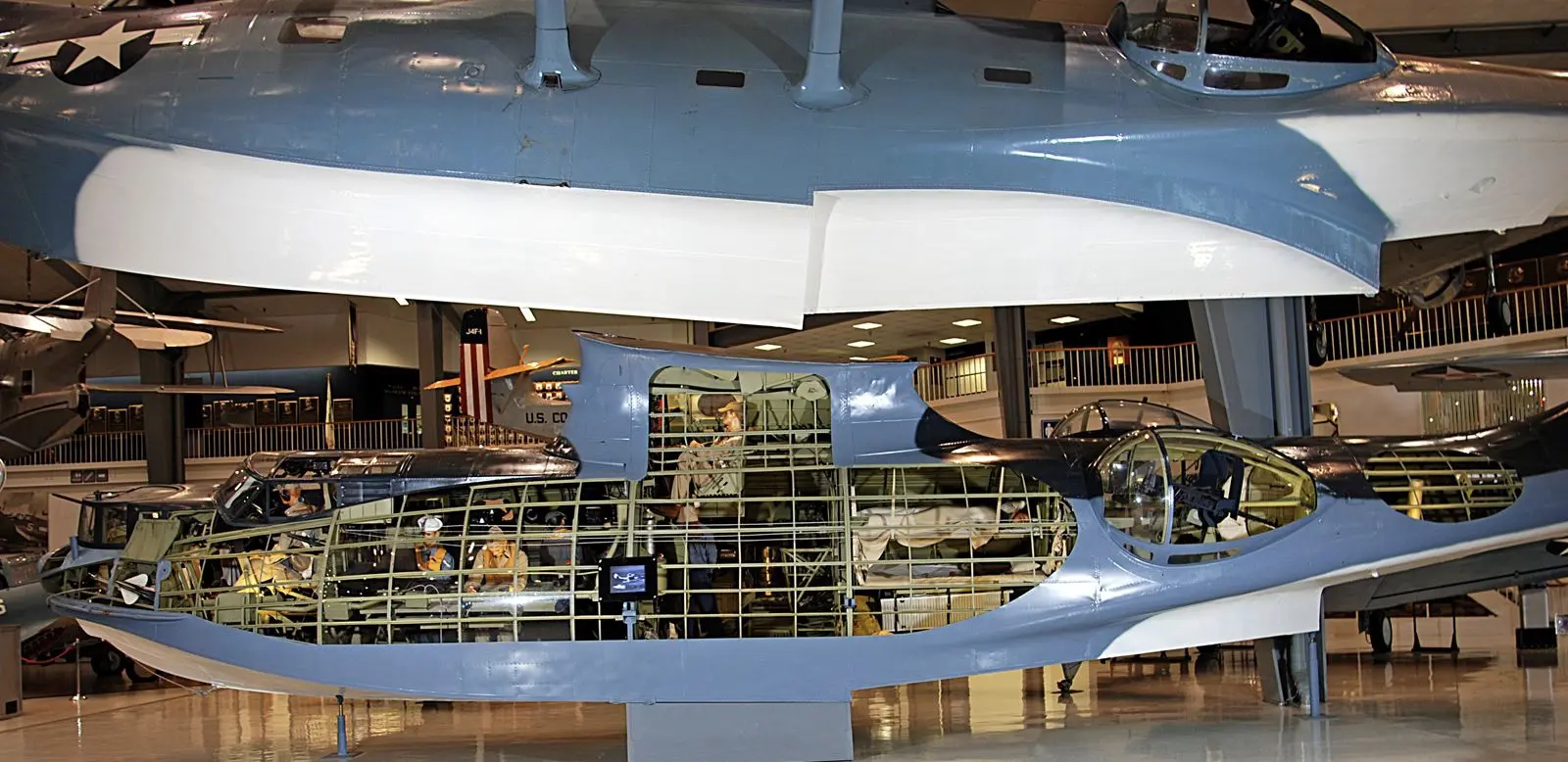Posted on March 16, 2010
Japan’s Attack at Pearl Harbor
When the Japanese attacked Pearl Harbor, their main targets were battleships and aircraft carriers. However, they were worried about the big PBY Catalina flying boats, which had the range to find the Japanese fleet and track it for hundreds of miles.

The PBY’s role in the attack began at 7 am, when a patrolling Catalina found a Japanese minisubmarine just off the entrance to Pearl Harbor. Along with the destroyer Ward, the PBY dropped its depth bombs on the submarine. The PBY sent a coded message to its base at 7:15, but by the time this message was decoded and passed on to CINCPAC, the Japanese bombs had begun falling.
In fact, the Japanese attack began when a Val dive bomber dropped a 550 pound bomb on Ramp 4 at the south end of Ford Island. This bomb hit among Patrol Squadron 22’s twelve aircraft. In the blast and subsequent fire, seven VP-22 PBYs were destroyed and the remaining five were placed out of commission for several days. Other patrol squadrons did little better. Of the 61 Catalinas that were available on Oahu that morning, all but 11 were destroyed or temporarily knocked out of action.

However, all of these remaining PBYs took to the air to find the Japanese fleet. One actually tracked the retreating Japanese aircraft, but its accurate report on the bearing on the Japanese fleet did not lead to action.
Seaplane tenders were also heavily involved in the attack. The Curtis was attacked heavily and suffered one direct hit and two damaging near misses. During this attack, the Curtis saw a Japanese minisubmarine and fired at it, hitting it twice with 5 inch shells. Seaplane tender Tangiers joined in the attack on the submarine. The two tenders stopped firing when the destroyer Monaghan began its kill run on the submarine.


Within hours, four patrol squadrons began flying to reinforce Oahu, and another began moving to Hawaii the next day. The aircraft of one of these reinforcement squadrons, VP-51, were taken over by VP-22, which was then sent on to Patrol Wing 10 in the Philippines, which had also lost most of its PBYs in the initial Japanese attacks.
Catalinas at Pearl Harbor
Catalinas flew with distinction throughout the war. Their ability to scout over long distances made them the eyes of the fleet. At Midway, it was a Catalina patrol aircraft that discovered the Japanese fleet. PBYs were also invaluable during the Guadalcanal campaign. Unfortunately, the PBYs proved incapable of defending themselves adequately against Japanese fighters. This included the PBY-5 and PBY-5A models, which had self-sealing fuel tanks, armored seats, and minor armor in front of gunners. Many were lost during the war.
PBYs were widely used in search and rescue operations. SAR Catalinas were called Dumbos.

PBYs were organized into patrol squadrons that nominally had a dozen PBYs organized into four three-plane sections. Squadrons were designated by VP, followed by the squadron number. P stood for patrol, while V stood for heavier-than-air. Squadrons were assigned to patrol wings. In Hawaii at the beginning of the war, Pat Wing 1 was located in Kaneohe. It had three squadrons—VP-11, VP-12, and VP-14. Japanese attacks destroyed or knocked out of service all aircraft on the ground and in the bay. Only the wing’s three aircraft on patrol were spared. Pat Wing 2 was based on Ford Island. It had VP-21, VP-22, VP-23, and VP-24. On the day of the attack, VP-21 was operating out of Midway and so was spared during the attack.
Post by Ray Panko
